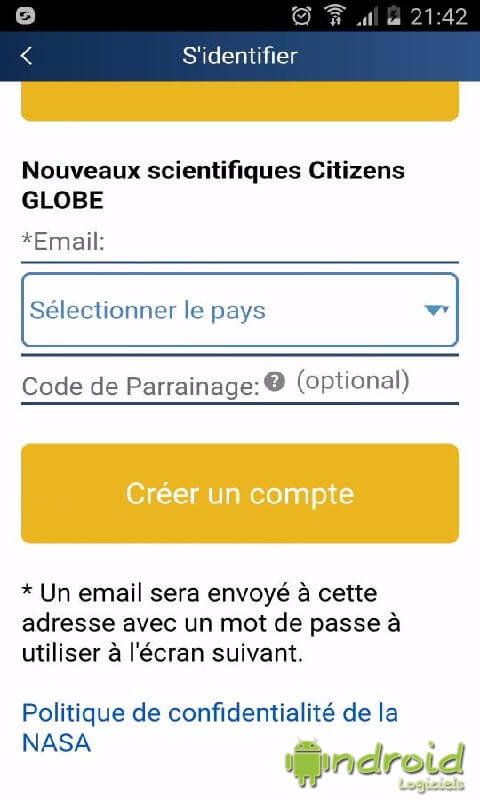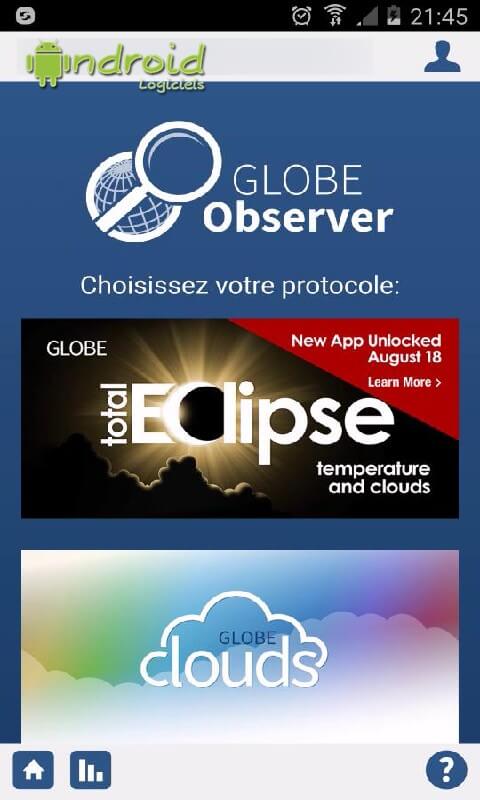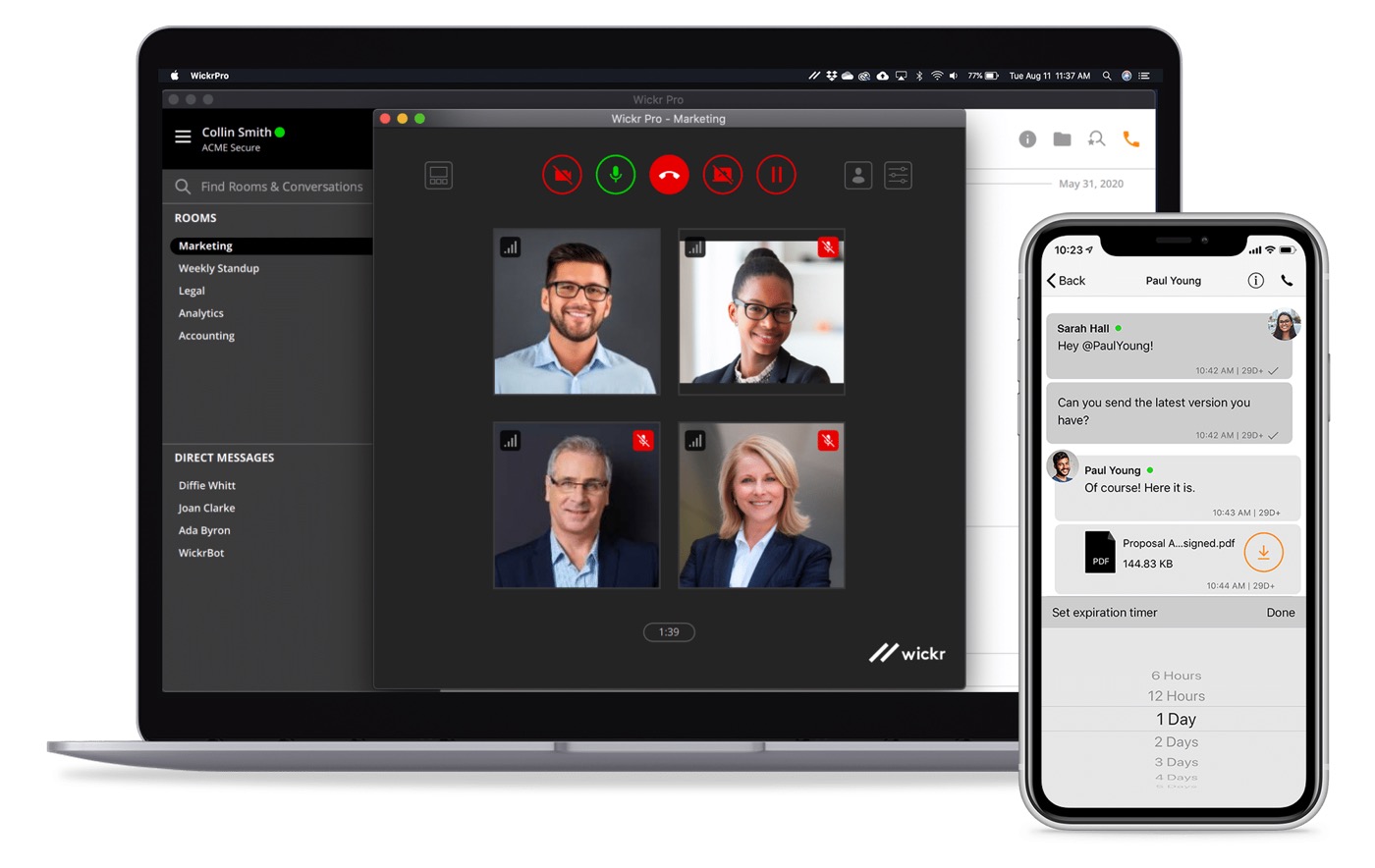GLOBE Observer – Make observations for NASA
WORLD (Global Iearning and Ocomments to Beffects the Environment) is an international program for science and education offering the opportunity to participate in data collection and contribute significantly to a better understanding of the Earth system and the global environment.
By using this application, you will join the GLOBE community and have the ability to provide your observational data to scientists around the world. Registration is mandatory, it can be done directly from the application by providing an e-mail address on which you will then receive your login password.




The home page provides quick access to available observations:
– Regular observations of Earth’s cloud cover, which will then be compared to NASA satellite observations.
– Location, observation and identification of mosquito habitats and mosquito larvae in order to help reduce the potential threat of diseases transmitted by these insects.
– From August 18, 2017, if you are on American soil, you will be able to observe a total solar eclipse from approximately 14 states and collect as much data as possible. During such an eclipse, changes are observable such as in the behavior of clouds, temperatures, or animals. These events are known, but not yet fully explained by scientists.



If desired, the application will be able to automatically send your observation location and receive notifications when flying over a satellite. These two functions are not mandatory but they will improve the capabilities and interactions of the application.
When sending images to NASA, you must first ensure that these images belong to you, that they do not include identifiable people, children, and anything else inappropriate. By validating the sending of these images, you will automatically authorize GLOBE and NASA to possibly use and publish them.

Example of observations available on https://vis.globe.gov/clouds
Among the features:
– Record clouds and sky conditions during the day.
– Connect to a global community of watchers.
– Consult the reports of other observers.
– See observations made by NASA satellites.
– Compare your reports to satellite data.
– Receive notifications during satellite overflights.
– Contribute to the understanding of the presence, range and spread of mosquitoes that are vectors of disease.
– Identify potential mosquito habitats.
– Take a sample to count the number of mosquito larvae in it.
– Identify the types of mosquito larvae.
– Eliminate the mosquito breeding habitat you have discovered.
– Help reduce the risk of disease transmission in your area.
For cloud observation, for example, you will need to:
– Indicate the date, time and your location.
– Indicate whether the sky is clear, cloudy or overcast.
– Estimate what percentage of the sky is covered.
– Identify the clouds.
– Indicate visual opacity.
– Photograph (optional) the observed sky.
Good observations ![]()


